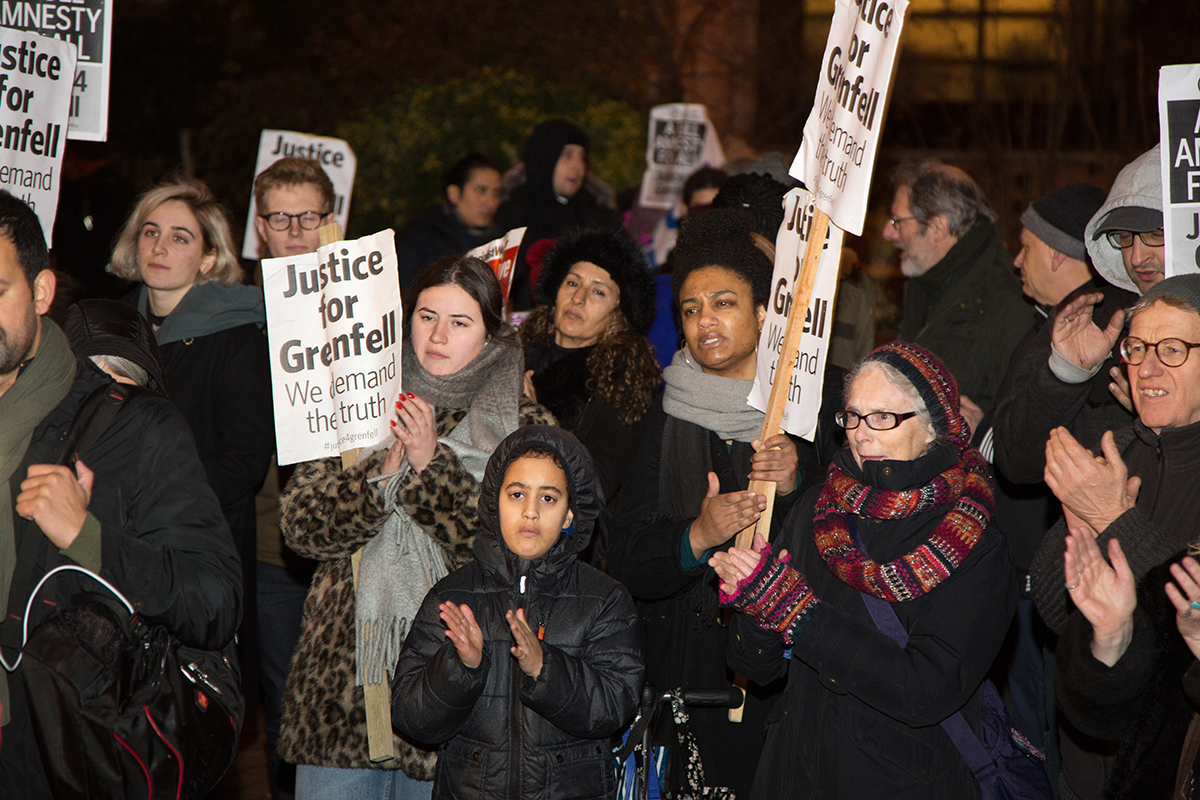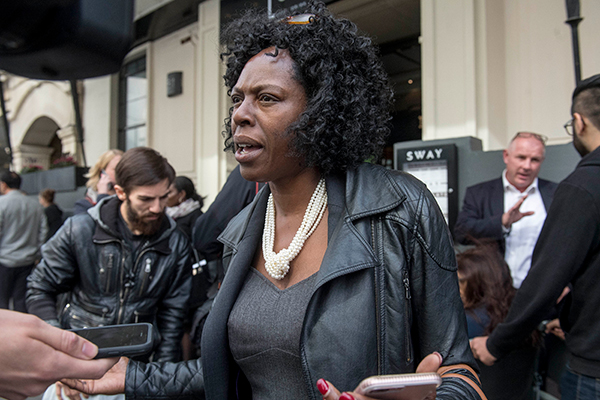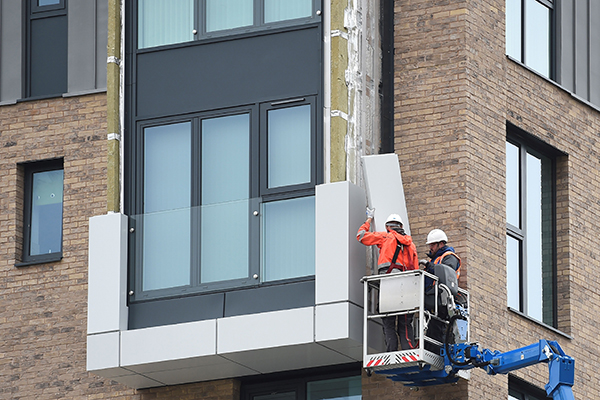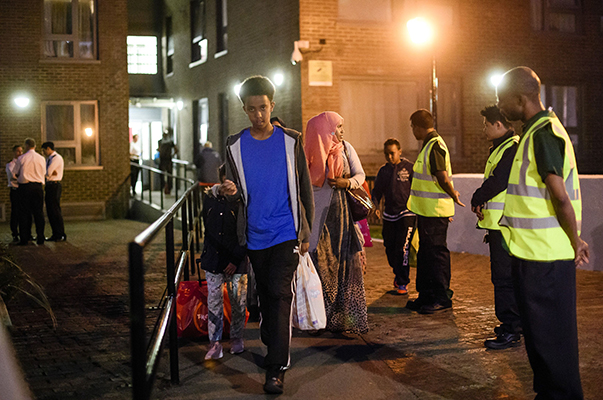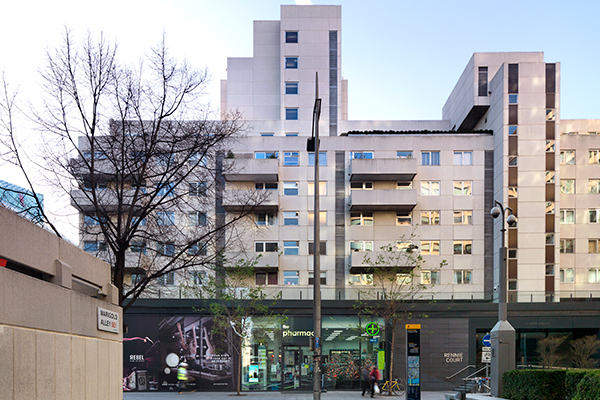You are viewing 1 of your 1 free articles
Six months on from Grenfell, what has changed?
Grenfell was supposed to be a watershed moment for housing. Inside Housing’s news team looks at what’s changed, and what hasn’t. Photography by Jonathan Goldberg, Press Association, Charles Hosea, Getty, Google, Rex Features.
In the days after the fire on June 14, bold promises were made by sector leaders and politicians about protecting the survivors and preventing a repeat of the tragedy.
Six months on, progress has been made in some areas but stilted in others.
We look at what’s changed and what hasn’t across a range of areas.
Rehousing
Yvette Williams, a co-ordinator for Justice 4 Grenfell, after the first preliminary hearing for the Grenfell Tower Inquiry
Three days after the fire, an embattled Theresa May told Sky News she would personally ensure the survivors of the blaze were rehoused in three weeks.
But 24 weeks later, on a cold night in December, a group of people are huddled outside Kensington and Chelsea Council town hall chanting “no justice, no peace”, protesting the continuing slow progress by the council in rehousing the residents of Grenfell Tower and its surrounding Walkways.
There are 209 households from Grenfell Tower and Grenfell Walk who still need to be rehoused permanently.
Out of this 209 more than half – 111 – are still in emergency accommodation, the vast majority in hotels, six months on from the fire. A
At a recent scrutiny committee meeting, it was revealed that 38 families in hotels include one or more children who are under 18. There have been 42 households who have moved into permanent homes and 41 have accepted a permanent offer. There are a further 49 households who are living in temporary accommodation.
Campaigners object to the council using a choice-based lettings system to rehouse the residents because they see it as placing the responsibility to find accommodation on residents when they have already been through so much. As Yvette Williams from campaign group Justice 4 Grenfell puts it: “The policy puts them into this bidding scheme so the onus is still on the former residents to work their way through it. They’re re-traumatising these people.”
On the council’s side, the defence is that finding so many new properties in the immediate area is no easy task. But the process has clearly not been handled well. A damning independent report released in November described it as “painfully slow”.
The council has promised to buy 300 new properties which will be offered to Grenfell residents as permanent social housing. These properties are a mix of new build homes, existing empty properties in the council’s stock and properties purchased on the open market. The council has exchanged on 72 homes but the majority of these properties will not be available to move into until the New Year.
For the survivors, a Christmas in temporary housing looms.
By Sophie Barnes
Fire risk assessments
Panels of external cladding being removed from a block in Wythenshawe, Manchester
A matter of hours after the blaze at Grenfell, attention began to turn to other towers. Did they pose the same risks? And would we know if they did? And how were the issues with Grenfell missed? Attention began to focus on the process of fire risk assessments (FRAs) in high rises.
Experts have cast doubt on the whole FRA process, noting in particular that there is no requirement for a fire risk assessor to be accredited by a professional body, no official requirements on what the checks must involve and no law on how frequent they must be.
The man who assessed Grenfell Tower, Carl Stokes, does list professional qualifications on his website, but admitted to Inside Housing – which first revealed Mr Stokes as the assessor – that his assessments of Grenfell Tower did not look at the cladding which has been widely blamed for the spread of the fire.
This, of course, was a symbol of a more systemic issue, and Grenfell Tower Inquiry expert witness Colin Todd told Inside Housing in September that he was planning to update his industry standard guidance
to advise landlords to check cladding. Most London councils have taken this step since the fire, despite not doing so when the London Fire Brigade advised them to in May.
A snap survey by Inside Housing found that many councils and housing associations intended to carry out fresh FRAs after the fire at Grenfell Tower, and a number of London councils said they were planning to carry out “more intrusive” FRAs, going into people’s flats as well as examining communal areas.
But worryingly actual progress on this point appears to have been slow. New Inside Housing research has revealed that hundreds of tower blocks have not been checked since the Grenfell Tower fire. A total of 60 local authorities responded to a request for information, and of 2,450 tower blocks, 1,288 (53%) have still not been checked since the Kensington fire.
By Luke Barratt
Safety measures
This stands as one area where concrete action is being taken by social landlords. Inside Housing contacted all the major high rise-owning councils and housing associations in England to ask about their fire safety programmes. The 86 landlords which responded manage 2,905 tower blocks – a substantial chunk of the country’s estimated 4,000 total high-rise social housing stock.
For 49% of the blocks owned by the respondents, or 1,425, sprinklers have either been approved for retrofit, or the landlord is considering doing so. The total bill for this work if all were to push ahead would be £300m – though 11 landlords said they did not yet know the potential cost. Owners of another 943 buildings said they were awaiting recommendations from the Hackitt Review of Building Regulations before taking further action.
The majority of respondents said their building had not been affected by cladding issues, but 31 landlords said dangerous external insulation systems had to be removed on a combined 75 blocks. Nearly a third of these organisations are not yet aware of how much this work will cost – but those that did reported a £47.6m spend so far.
And 56 landlords said they had been carrying out extra fire safety work on top of existing programmes since 14 June, such as new fire doors, fire stopping upgrades and renewed fire risk assessments. The total cost of this work was estimated at £157.1m, bringing the total fire safety bill for post-Grenfell remedial work to at least £504.7m if all potential costs are included.
This has all been achieved in the absence of government funding – despite promises not to allow cost to inhibit work, the government has not stumped up any cash and requests for help to pay for sprinklers have been blocked with the government deeming them “additional, rather than essential”. The cost then must be felt in general repairs budgets, or new build programmes. But many social landlords have been doing what they can to make it work.
By Nathaniel Barker
Private blocks
Rennie Court, a private block issued with an enforcement notice
After the fire the debate has focused on social housing – with concerns about fire safety spiralling into a much broader debate about the sector as a whole. But while this focus is important, it has masked the fact that fire risk also exists in privately owned towers, and much less is being done about it.
At the National Housing Federation conference in September, Sajid Javid said a fire would be far less likely to break out in a privately owned block. But this doesn’t appear to have been based in fact. Earlier that month, he revealed in parliament that cladding from 85 out of 89 private sector blocks tested had failed fire safety tests, with councils still struggling to audit where other towers may pose a risk.
And an investigation published this week by Inside Housing revealed the London Fire Brigade has issued 87 enforcement notices – noting concern about fire safety – against owners of privately owned blocks since 2015, compared to 62 issued to social landlords.
Councils are struggling to get hold of information about privately owned blocks in their areas. Nick Forbes, leader of Newcastle City Council and senior vice-chair of the Local Government Association (LGA), told a Treasury select committee that an issue that “horrified me was that we knew the situation with the tower blocks that the council owns but we didn’t know the situation with the other blocks in the city because we have a deregulated building inspection process which meant that, not only did we not have oversight of them, we had no records”.
Further Inside Housing research found 51 councils had no information at all about privately owned blocks in their area, and a further 25 did not know what type of cladding was on the blocks.
According to the LGA’s fire services management committee it may be that privately owned blocks are more risky than those owned by social landlords.
A briefing issued last month said: “From what we have heard from the construction industry, it seems ACM cladding has been more widely used on private high-rise residential buildings than on social housing tower blocks. The proportion of private high-rise residential buildings with ACM cladding that needs to be removed may well be greater than in council and housing association buildings.” Sharp focus is needed.
By Sophie Barnes
Grenfell: six months on
We have published a series of articles to mark the six month anniversary of the Grenfell Tower fire, which killed 71 people on 14 June.
Click on the links below to read the pieces:
Six months on from Grenfell, what has changed? Our news team looks at the progress made since the fire
Grenfell: the survivors' stories Read moving speeches to MPs from four people who survived the fire
Councils have no information on privately owned tower blocks It is not just social housing blocks councils need to keep an eye on when it comes to fire safety
Disguised by luxury: fire safety flaws in private blocks revealed Our research challenges Sajid Javid's suggestion a Grenfell-style fire couldn't happen in a luxury block
We need to go much further on fire safety Our editor Emma Maier outlines Inside Housing's view on the state of play
Half of high rises could get sprinkler refit We reveal the sector's projected spend on fire safety improvements since the disaster
The French connection The parallels between a fire in France and the Grenfell tragedy
Less than half of council tower blocks assessed since Grenfell Our exclusive research reveals the state of play regarding councils' fire risk assessments
Circus therapy for children affected by Grenfell How a group offering circus activities is bringing the community together
Dangerous cladding to be removed from giant modular tower blocks Housing association Notting Hill Housing is to spend £8m to remove dangerous material on six of its blocks
